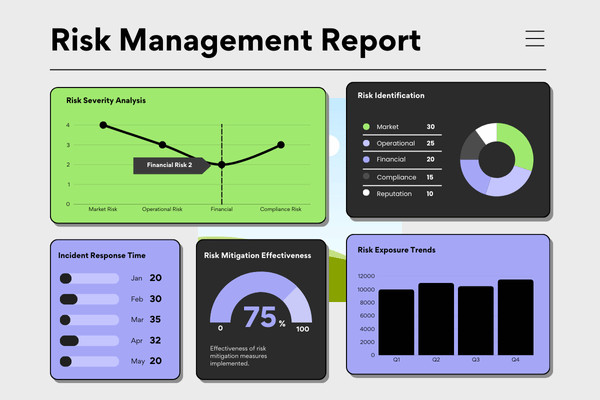
This post is part of the "Strategic Growth Series: 11 Key Operational Areas for Success" series, which covers the 11 essential operational areas that every service-based business needs to master. In this segment - segment #6, I focus on leadership strategies for entrepreneurs - including solopreneurs to help lead with confidence and achieve business goals.
Introduction: Leadership isn’t just for CEOs of large corporations; it’s equally crucial for entrepreneurs - including solopreneurs. As the head of a small business, you wear many hats—often juggling operations, marketing, customer service, and more. Effective leadership can be the difference between simply managing a business and driving it toward long-term success. In this post, I’ll explore leadership strategies tailored specifically for entrepreneurs - including solopreneurs, helping you to lead with confidence, inspire others, and achieve your business goals.
Section 1: Why Leadership Matters for Small Businesses. Even in a small business, strong leadership is essential. Your leadership style sets the tone for how your business operates, how decisions are made, and how you interact with customers, partners, and any team members you may have.
- Vision and Direction: As a leader, it’s your job to set a clear vision for your business and ensure that every decision aligns with that vision.
- Motivation and Inspiration: Effective leadership isn’t just about managing tasks; it’s about motivating yourself and any team members to strive for excellence.
- Problem-Solving: Strong leadership helps you navigate challenges, make tough decisions, and find innovative solutions to business problems.
Section 2: Key Leadership Strategies for Entrepreneurs - Including Solopreneurs
- Lead by Example: As the face of your business, your actions set the standard. Demonstrate the work ethic, integrity, and dedication you expect from others.
- Example: If you want to foster a culture of punctuality and professionalism, ensure that you are always on time and prepared for meetings.
- Embrace Continuous Learning: The business landscape is constantly evolving. Stay ahead by continually seeking new knowledge and skills that can help you lead more effectively.
- Example: Invest in courses, attend workshops, or read books on leadership, marketing, and business management to sharpen your skills.
- Delegate When Possible: Even as a solopreneur, it’s important to recognize when to delegate tasks. Whether it’s outsourcing certain functions or using automation tools, delegation frees up your time to focus on strategic leadership.
- Example: Outsource bookkeeping or administrative tasks so you can concentrate on growing your business.
- Build a Network: Surround yourself with a supportive network of peers, mentors, and advisors who can offer guidance, feedback, and encouragement.
- Example: Join industry groups or local business networks where you can connect with other entrepreneurs facing similar challenges.
- Practice Self-Care: Leading a business can be demanding. Prioritize self-care to maintain your energy, creativity, and decision-making abilities.
- Example: Schedule regular breaks, exercise, and set boundaries to avoid burnout.
Section 3: How to Apply Leadership in Daily Operations. Leadership isn’t just about big-picture strategy—it’s also about how you manage your daily operations:
- Set Clear Goals: Define specific, actionable goals for your business and regularly review your progress. This keeps you focused and accountable.
- Example: Set weekly or monthly revenue targets and break them down into daily tasks that drive toward those goals.
- Communicate Effectively: Whether you’re working with clients, suppliers, or a small team, clear and open communication is key to effective leadership.
- Example: Use tools like Slack or Zoom to stay in regular contact and ensure everyone is aligned with your business goals.
- Adapt and Innovate: The ability to adapt to changes and continuously innovate is a hallmark of strong leadership. Stay flexible and open to new ideas and approaches.
- Example: If a particular marketing strategy isn’t delivering results, be willing to pivot and try something new.
Section 4: The Impact of Effective Leadership on Your Business. Strong leadership can have a profound impact on your business:
- Increased Productivity: When you lead with clarity and purpose, you’re more likely to stay focused, make efficient decisions, and keep your business moving forward.
- Stronger Relationships: Effective leadership helps you build stronger relationships with customers, partners, and team members, which can lead to repeat business and referrals.
- Greater Resilience: As a leader, you’ll be better equipped to handle setbacks and challenges, ensuring your business can weather difficult times and emerge stronger.
Conclusion: Leadership is a critical component of success for entrepreneurs - including solopreneurs. By leading with vision, continuously learning, and effectively managing your daily operations, you can drive your business toward long-term success.
FREE RESOURCE
Ready to strengthen your leadership skills and drive your business toward long-term success? Download my FREE Business Strategy Self-Audit Workbook by clicking HERE. This comprehensive guide covers all 11 essential operational areas every service-based business must master—including Leadership Strategies. Use it to assess your leadership approach, identify areas for growth, and set a clear vision to lead with confidence and achieve your business goals.
JOIN THE CONVERSATION!
What’s the biggest leadership challenge you’ve faced as an entrepreneur or solopreneur? How have you worked to overcome it, and what leadership strategies have had the most impact on your business? Share your experiences in the comments—I’d love to hear your insights and connect with you!

This post is part of my "Strategic Growth Series: 11 Key Operational Areas for Success", which covers the 11 essential operational areas that every service-based business needs to master. In this segment - segment #2, I focus on the critical role of innovation as a key for staying ahead of the curve.
Introduction: In today's competitive and ever-evolving market, standing still is no longer an option. For entrepreneurs in the service sector, innovation is not just a buzzword but a key driver of business growth. Whether it's refining your service offerings, optimizing processes, or adopting new technologies, innovation is essential for staying ahead of the curve. In this post, I’ll explore how embracing innovation can help you grow your business, and I’ll share actionable strategies to keep your business adaptable, competitive, and thriving.
Section 1: The Importance of Innovation in Business Growth Innovation allows businesses to adapt to changing market conditions, meet evolving customer needs, and differentiate themselves from competitors. By embracing innovation, you can:
- Enhance Service Offerings: Innovation helps you create new or improved services that better meet your clients' needs.
- Increase Efficiency: Streamlining operations through innovative processes can reduce costs and improve productivity.
- Stay Competitive: Continuous innovation ensures that your business remains relevant and can outpace competitors.
- Foster Client Loyalty: By offering innovative services or experiences, you can build stronger relationships with clients and increase retention.
Section 2: Strategies for Embracing Innovation in Your Business. Here are some practical strategies you can use to incorporate innovation into your business and drive growth:
- Continuously Listen to Your Clients: Keep an open line of communication with your clients to understand their evolving needs. Use feedback to refine your services and adapt to their preferences.
- Example: Conduct regular surveys or feedback sessions to gather insights on how your clients view your services and what improvements they would like to see.
- Leverage Technology: Technology is one of the most powerful tools for innovation. From automation tools to CRM systems, the right technology can help you streamline operations, enhance client interactions, and deliver your services more efficiently.
- Example: Use automation tools for client scheduling, invoicing, or email marketing to free up your time for more strategic tasks.
- Implement Small, Incremental Changes: Innovation doesn’t always require big leaps. Start by making small changes that improve your day-to-day processes or service offerings. These incremental innovations add up over time, leading to significant growth.
- Example: Implement a new client onboarding process that simplifies the experience and reduces the time spent on administrative tasks.
- Invest in Continuous Learning and Development: Stay ahead of industry trends by continuously learning and adapting. Attend workshops, webinars, and conferences to learn about new technologies, trends, and business strategies that can help you innovate.
- Example: Subscribe to industry-related journals or take online courses to stay informed about emerging trends in the service sector.
- Collaborate and Network: Innovation thrives in collaborative environments. Build relationships with other entrepreneurs, and industry professionals. Collaborative partnerships can introduce fresh ideas and lead to innovative solutions.
- Example: Partner with other service providers to create a new service bundle that addresses a specific client need.
Section 3: Overcoming the Challenges of Innovation. While innovation is crucial for growth, it’s not always easy. As an entrepreneur, you might face challenges such as limited resources, time constraints, or fear of failure. Here are some ways to overcome these obstacles:
- Start Small: Focus on one area where innovation can make a significant impact and expand from there.
- Embrace Failure as Learning: Understand that not all innovations will succeed. Use setbacks as opportunities to learn and improve.
- Allocate Time for Innovation: Dedicate specific time each week to work on innovative ideas, whether it’s improving your service offerings or experimenting with new technologies.
Conclusion: Innovation is the cornerstone of business growth, especially for entrepreneurs in the service sector. By embracing innovation, you can stay ahead of the competition, improve your client relationships, and drive long-term success. Start small, stay informed, and be open to change—your business will thrive as a result.
FREE RESOURCE
Ready to unlock the power of innovation and drive growth in your business? Download my FREE Business Strategy Self-Audit Workbook by clicking HERE. This comprehensive guide covers all 11 essential operational areas every service-based business must master—including Innovation. Use it to assess your current practices, uncover opportunities for improvement, and build a strategy that keeps your business adaptable, competitive, and thriving
JOIN THE CONVERSATION!
What’s your biggest challenge when it comes to fostering innovation in your business? How has it impacted your ability to stay competitive and meet your clients' needs? Share your story in the comments—I’d love to hear how you’re tackling innovation and connect with you!

This post is part of my "Strategic Growth Series: 11 Key Operational Areas for Success", which covers the 11 essential operational areas that every service-based business needs to master. In this segment - segment #1, I focus on the critical role of financial management in guiding strategic decision-making.
Introduction: In the complex world of business, making informed and strategic decisions is critical to success. At the heart of this process lies financial management—the practice of planning, organizing, controlling, and monitoring your financial resources. Effective financial management provides the data and insights necessary to guide strategic decision-making, ensuring that your business not only survives but thrives. In this post, I'll explore how robust financial management supports strategic decisions and why it’s essential for the long-term success of your business.
Section 1: What is Financial Management? Financial management involves managing your business’s financial resources to achieve your objectives. It encompasses everything from budgeting and forecasting to financial reporting and cash flow management. By maintaining a clear understanding of your financial position, you can make decisions that align with your business’s strategic goals.
- Example: Financial management includes creating budgets, analyzing financial statements, and ensuring that your business has enough cash flow to meet its obligations and invest in growth opportunities.
Section 2: Why is Financial Management is Crucial for Strategic Decision-Making? Financial management plays a pivotal role in strategic decision-making for several reasons:
- Provides Accurate Data: Financial reports and statements provide accurate data that is essential for making informed decisions. This data allows you to assess the financial health of your business and identify areas for improvement.
- Supports Goal Setting: Financial management helps you set realistic financial goals and develop strategies to achieve them. It ensures that your goals are grounded in financial reality.
- Enables Risk Management: By understanding your financial position, you can identify potential risks and develop strategies to mitigate them, protecting your business from unforeseen challenges.
- Optimizes Resource Allocation: Financial management ensures that your resources are allocated efficiently, enabling you to invest in opportunities that offer the best return on investment.
Section 3: How Does Financial Management Inform Strategic Decisions?
- Budgeting and Forecasting: Accurate budgeting and forecasting provide a roadmap for your business’s financial future. By comparing actual performance against forecasts, you can adjust your strategy to stay on track.
- Example: If your sales are trending below forecast, you might decide to increase marketing efforts or adjust pricing strategies to boost revenue.
- Cash Flow Management: Maintaining healthy cash flow is essential for meeting your short-term obligations and investing in long-term growth. Regular cash flow analysis helps you make decisions about when to expand, hire, or invest in new projects.
- Example: Positive cash flow might allow you to invest in new equipment, while negative cash flow might require cutting costs or securing additional financing.
- Profitability Analysis: Understanding the profitability of different services helps you make strategic decisions about where to focus your efforts and resources.
- Example: If one service you offer is significantly more profitable than others, you might decide to invest more in its development and marketing to maximize returns.
- Financial Risk Assessment: By analyzing your financial statements and metrics, you can identify potential financial risks, such as high debt levels or low liquidity, and take proactive steps to address them.
- Example: If your debt-to-equity ratio is too high, you might focus on paying down debt before taking on new investments.
Section 4: How to Strengthen Financial Management for Better Decision-Making. To enhance your financial management practices and improve decision-making:
- Invest in Financial Tools: Use accounting software and financial management tools to automate tasks, generate real-time reports, and provide insights into your financial health.
- Regularly Review Financial Statements: Make it a habit to review your financial statements regularly. This practice helps you stay informed and quickly identify trends or issues that require attention.
- Seek Professional Advice: Consider working with a financial advisor, accountant, or business strategy coach to gain expert insights into your financial management practices and make more informed strategic decisions.
- Self-Review: Even if you’re a solopreneur without a team, regularly reviewing your financial health allows you to stay proactive and prepared. Consider setting aside time each week to go over your financials and make adjustments as needed.
Conclusion: Effective financial management is the foundation of strategic decision-making. By providing accurate data, supporting goal setting, enabling risk management, and optimizing resource allocation, financial management helps you make informed decisions that drive your business toward long-term success.
FREE RESOURCE
Ready to take control of your financial management and align your strategy with your goals? Download my FREE Business Strategy Self-Audit Workbook by clicking HERE. This comprehensive guide covers each of the 11 essential operational areas every service-based business must master—including Financial Management. Use it to assess and strengthen your business for long-term success.
JOIN THE CONVERSATION!
What’s your biggest challenge when it comes to financial management in your business? How has it influenced the decisions you make? Share your experience in the comments—I’d love to hear your story and connect with you!









